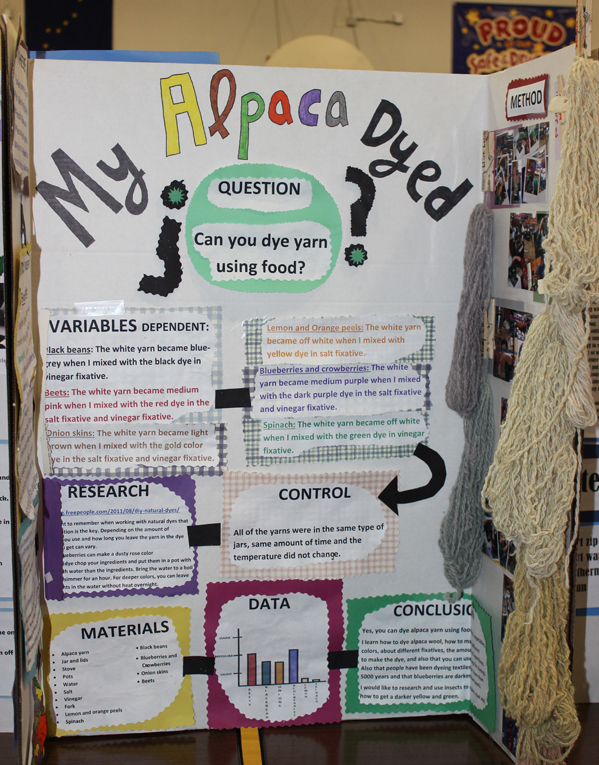The Chapman School gym was full of science and the young scientists displaying their projects at the school’s April 23 science fair, coordinated by teacher Jonathan Sharp.
The projects ranged from Tyler Johnson’s blue-ribbon research into how likely hunters are to accurately identify legal-sized moose antlers at a distance of 100 feet to some eager first-grade scientists answering their own question about how polar bears stay warm in cold water.
Projects were required for students in second through eighth grades. However, some younger scientists in preschool and first grade took advantage of the event to sharpen their scientific approach. In all, about 70 projects were on display at the fair.
The youngsters began putting their projects together in March.
“Most experiments are completed at home, but class time is given to guide students through the scientific process and assist students with completing their (display) boards,” said Sharp.
Tyler, an eighth-grader, chose his project because of the importance of moose meat in local diets and the hunting regulation requiring moose to have 50-inch antlers or four or more brow tines to be legal. His display included news articles on the number of illegal moose taken, relating that to hunters’ inability to accurately determine antler size from a distance.
Through his research, which included various sizes of racks provided by the Alaska Department of Fish and Game, Tyler showed significantly more than 50 percent of those surveyed were unable to correctly identify rack size.
“If this was a true hunting situation … more people may have shot at one of the illegal moose,” Tyler said.
In their hypothesis, Kya Stokes and her first-grade classmates suggested polar bears’ layer of fat was what allowed them to survive arctic water. Substituting shortening inside a plastic bag for that layer of fat, Kya demonstrated the students’ research by inserting one of her hands into the plastic bag and putting it into a tub of icy water. As a comparison, she inserted her other hand into a plastic bag without shortening and slipped it into the water. The demonstration clearly indicated the importance of fat in maintaining body temperature. Through several sources the students also learned “that the blubber of the polar bear is four inches thick to keep them warm.”
Looking a bit closer to home for a research topic, third-grader Ashton Simpson tested the effectiveness of food to dye yarn from the alpaca on his family’s “Anchor River Llama Alpaca Ranch.” Using beans, beets, onions, lemon and orange peels, blueberries and crowberries, and spinach, Ashton proved the dyes effective — samples of his work were on display — and came up with a future research topic: using insects as a basis for dye.
Judging of the projects was done by members of the community, who awarded first-, second- and third-place ribbons.
Grades 6-8:
First place: “Rack ‘em Up” by Tyler Johnson;
Second place: “Electromagnetic Power,” by Wayne Newman;
Third place: “Fizzle Pop!” by Iris Strongheart.
Grades 4-5:
First place: “I’m Melting!” by Myah Monicken;
Second place: “The Fluffiest Muffins,” by Kylie Cortez;
Third place: “CD Burning,” by Angus Issac.
Grades 2-3:
First place: “True Colors,” by Riley Drake;
Second place: “Dissolving peeps in different kinds of liquids,”
by Nikole Drake;
Third place: “Rock candy crystals,” by Blake Newman; “Wind resistance” by Kaytlin McAnelly; “Rock candy crystals” by Brook Shafer.
People’s choice:
First place: “My alpaca dyed,” by Ashton Simpson;
Second place: “Horse temperature” by Haylee Overson;
Third place: “Kaleidoscope” by kindergartener C. J. Burns.
“A big thank you to enthusiastic Anchor Point parents for supporting students with their science projects,” said Sharp. “We had (more than) 100 people attend the evening showing and the projects keep improving every year.”
McKibben Jackinsky can be reached at mckibben.jackinsky@homernews.com.


